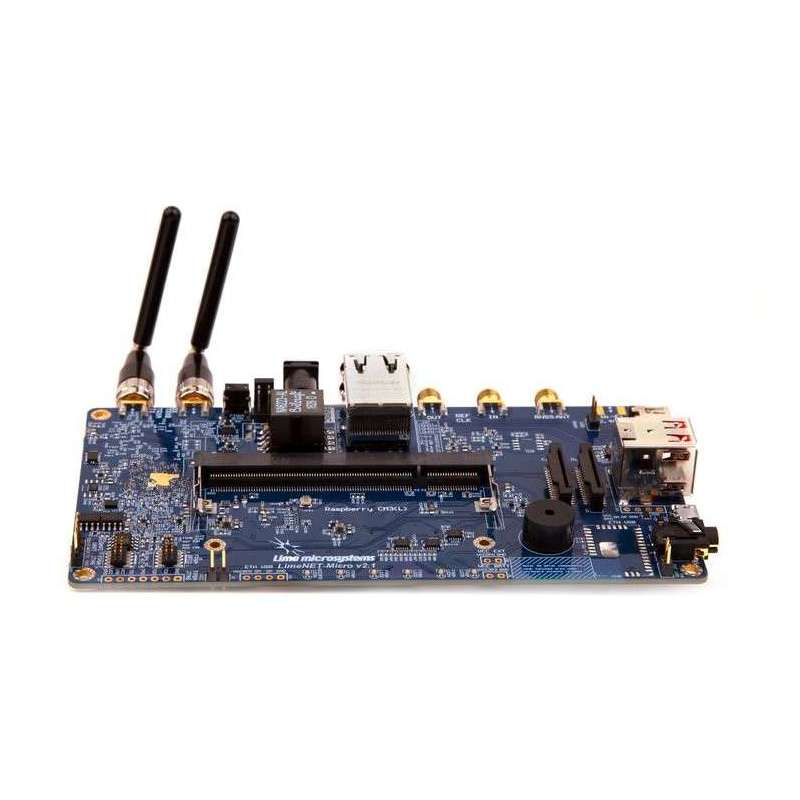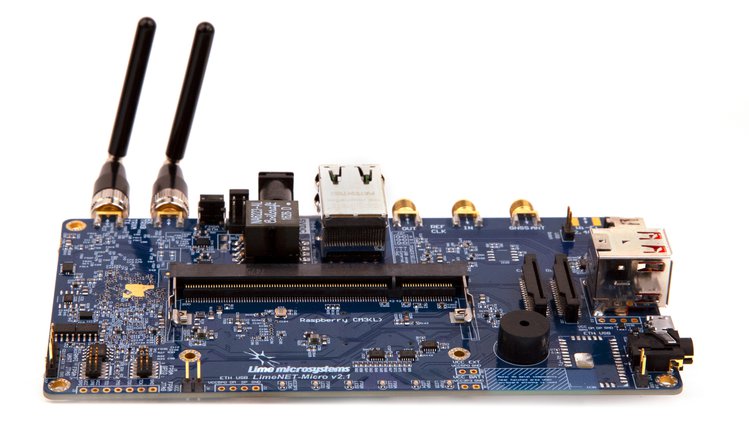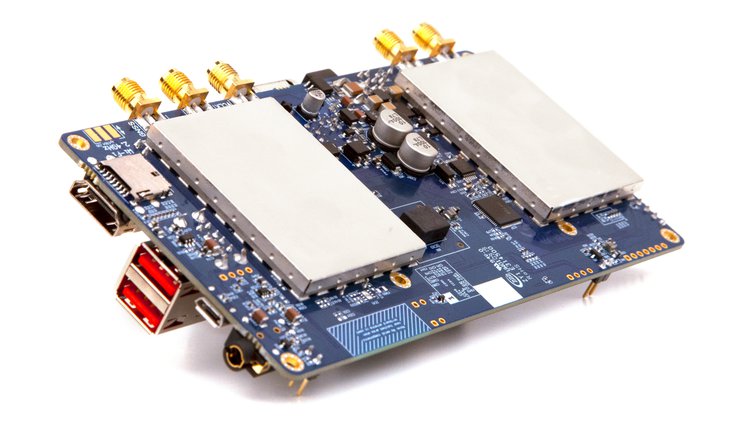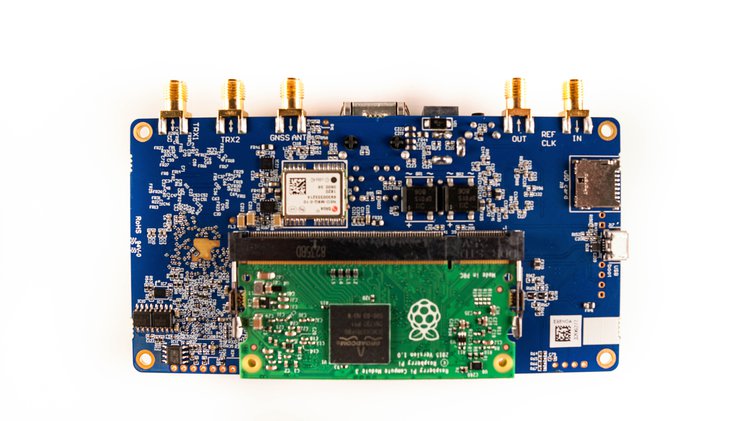



RLX COMPONENTS s.r.o. , Electronic Components Distributor.
RLX COMPONENTS s.r.o. , Electronic Components Distributor.
RF Development Tools (Lime Microsystems) LimeNET Micro
RF Development Tools (Lime Microsystems) LimeNET Micro
LimeNET Micro makes deploying wireless networks more accessible than ever before, by extending the LimeNET line of integrated hardware solutions via an ultra-low cost platform that is capable of supporting narrowband systems, such as GSM and IoT wireless standards, in a stand-alone configuration.
As with existing integrated LimeNET platforms, the new LimeNET Micro is built on the very same revolutionary field-programmable RF (FPRF) technology and features the LMS7002M transceiver at its heart. However, this highly cost-optimised, single board solution also integrates GPS for high-accuracy timing, active Power-over-Ethernet (PoE), and embedded compute for fully standalone operation.
In utilising the Raspberry Pi Compute Module 3+, LimeNET Micro builds on previous platforms to further democratise wireless networks in much the same way that the Raspberry Pi has democratised embedded computing.
Given its incredibly low price point and highly integrated nature, there are endless application possibilities for LimeNET Micro, ranging from cellular networks and IoT, through spectrum monitoring, test and measurement, amateur radio, and radio astronomy.



LimeNET Micro with Raspberry Pi Compute Module (bottom)
A Raspberry Pi Compute Module 3+ is included with every purchase of a LimeNET Micro (excluding early bird units). Raspberry Pi Compute Module 3+ Lite‘s will also work with LimeNET Micro, but would require use of the separate microSD slot.
| LimeSDR-USB | LimeSDR-Mini | LimeNET-Micro | ||
|---|---|---|---|---|
| Frequency Range | 100 kHz - 3.8 GHz | 10 MHz - 3.5 GHz | 10 MHz - 3.5 GHz | |
| RF Bandwidth | 61.44 MHz | 30.72 MHz | 10 MHz* | |
| Sample Depth | 12 bit | 12 bit | 12 bit | |
| Sample Rate | 61.44 MSPS | 30.72 MSPS | 10 MSPS* | |
| TX Channels | 2 | 1 | 1 | |
| RX Channels | 2 | 1 | 1 | |
| Duplex | Full | Full | Full | |
| Interface | USB 3.0 | USB 3.0 | N/A | |
| Programmable Logic Gates | 40k | 16k | 16k | |
| Chipset | LMS7002M | LMS7002M | LMS7002M | |
| Processor | N/A | N/A | Raspberry Pi Compute Module 3+ (or CM3+ Lite) | |
| Open Source | Full | Full | Full | |
| Oscillator Precision | +/-1 ppm initial, +/-4 ppm stable | +/-1 ppm initial, +/-4 ppm stable | +/-5 ppb (100s measurement period) | |
| Transmit Power | Max 10 dBm (depending on freq.) | Max 10 dBm (depending on freq.) | Max 10 dBm (depending on freq.) | |
* - Maximum 10 MHz receive-only or 5 MHz full-duplex transmit plus receive. Actual RF bandwidth and sample rate will vary depending on any DSP or other processing also taking place on the Raspberry Pi Compute Module 3(L)
Specific References